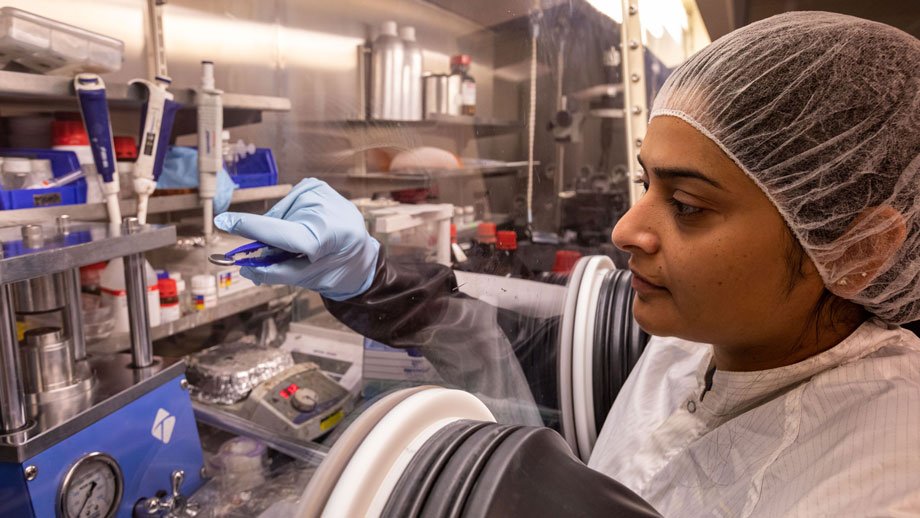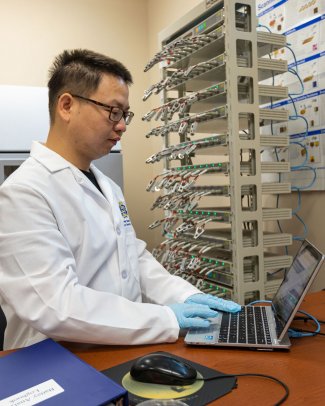
Understanding how a new material helps increase the stability as well as the storage capacity of lithium-ion batteries can help researchers develop high-performance energy storage devices, according to assistant professor Yue Zhou of South Dakota State University’s Department of Electrical Engineering and Computer Science.
He will be collaborating with researchers from the University of Texas at Arlington to determine how lithium metal improves battery performance through a three-year, nearly $450,000 National Science Foundation grant. This fundamental scientific knowledge will provide guidelines for researchers using this material to develop next-generation batteries to power electric cars and store renewable energy.
Electric cars, for instance, now have a range around 300 miles, but Zhou said, “If we can develop high-performance storage devices that are the same weight but can store more energy, we can get it up to 600 miles.” For his research to improve the performance of lithium-ion batteries, Zhou received the Jerome J. Lohr College of Engineering’s Young Investigator Award.

Using lithium metal in place of graphite as the anode material can increase the battery’s energy storage capacity, but, over time, the lithium foil tends to form needle-like dendrites. These tiny metal particles can pierce the separator, causing a short circuit, Zhou said. This can lead to fires, similar to the ones that have occurred recently in electric cars.
“Dendrite growth on the electrodes and unstable solid-electrolyte interphase formation have created safety concerns in lithium-ion batteries and hindered practical applications,” Zhou said.
In previous South Dakota Board of Regents-funded research, Zhou used plasma processing to apply an additional coating to protect the lithium metal anode and thereby prevent dendrite formation. In addition, he combined graphite and silicon oxide to make an ultrathin film that prevents dendrite growth and enhances ion transport. This also creates an artificial interfacial layer between the electrolyte and the lithium metal electrode that increases stability and improves battery cell performance.
Those preliminary results helped Zhou secure the NSF grant, which is funded jointly by the Division of Chemical, Bioengineering, Environmental and Transport Systems and the Established Program to Stimulate Competitive Research, or EPSCoR. As the lead institution, SDSU will receive approximately $250,000 in NSF funding. One SDSU doctoral student and several undergraduate students will also work on the project.
“How the protective layer interacts with the electrochemical process of the lithium metal anode is not well understood,” Zhou said. “We want to understand the physical and chemical properties that lead to these desirable properties.” What the researchers learn will help improve the safety of electric vehicles and advance efforts to develop devices that can store renewable energy.
Republishing
You may republish SDSU News Center articles for free, online or in print. Questions? Contact us at sdsu.news@sdstate.edu or 605-688-6161.

